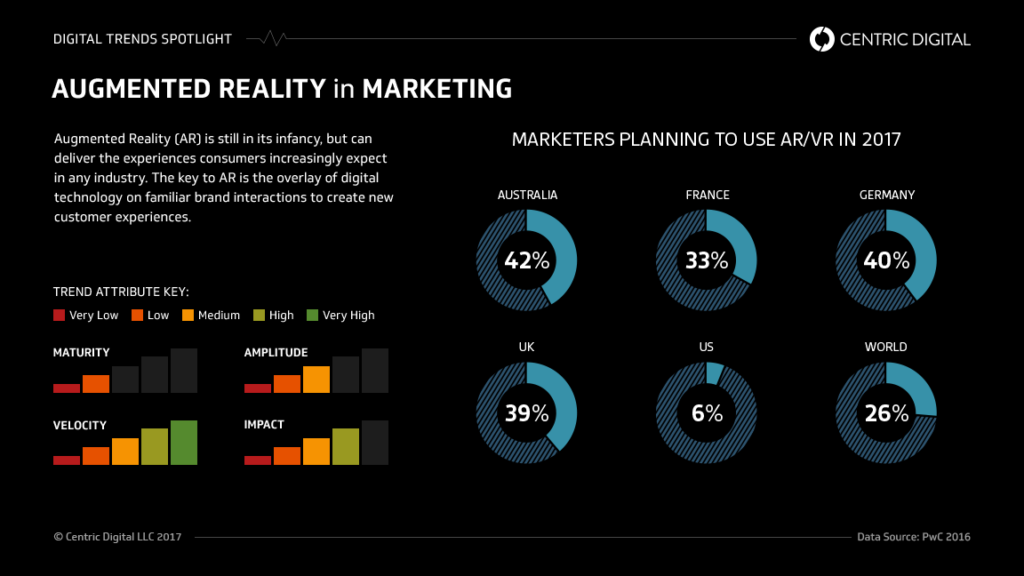Keyword: The 6 Impacts of Augmented Reality on Your Marketing Experience
Introduction

With the Impacts of Augmented Reality in today’s digital age, marketing has evolved tremendously. Traditional methods of advertising are no longer sufficient to captivate the attention of consumers. With the advent of augmented reality (AR), a new realm of possibilities has opened up for marketers. AR has the power to revolutionize the way businesses engage with their target audience and create unforgettable experiences. In this article, we will explore the impact of augmented reality on your marketing experience and how it can enhance your brand’s visibility and customer engagement.
1. Understanding Augmented Reality

Augmented reality refers to the integration of digital elements into the real world, enhancing the user’s perception and interaction with their surroundings. It overlays computer-generated content such as images, videos, and 3D models onto the physical environment, typically viewed through smartphones, tablets, or AR glasses. By blending the virtual and real world seamlessly, AR provides an immersive experience that enables users to interact with digital content in real time.
2. Enhancing Product Visualization

One of the significant advantages of augmented reality in marketing is its ability to enhance product visualization. AR allows customers to virtually try out products before making a purchase, eliminating doubts and increasing confidence. For example, furniture retailers can use AR to enable customers to see how a particular sofa would look in their living room or how a new lamp would fit on their bedside table. This interactive experience helps customers make informed decisions, resulting in higher customer satisfaction and reduced product returns.
3. Creating Interactive Brand Experiences

Augmented reality enables marketers to create interactive brand experiences that leave a lasting impression on consumers. By developing AR-based mobile applications or campaigns, brands can engage customers in unique and memorable ways. For instance, cosmetic companies can offer virtual makeup try-on, allowing customers to experiment with different shades and styles without physically applying any product. This gamified approach not only increases customer engagement but also encourages social sharing, generating organic exposure for the brand.
4. Boosting Social Media Engagement

In the era of social media, brands are constantly seeking ways to stand out and increase engagement. Augmented reality provides an excellent opportunity for brands to create shareable content that sparks conversations and captures attention. With AR filters and effects, brands can offer users entertaining and interactive experiences that can be shared on various social media platforms. This not only increases brand visibility but also encourages user-generated content, effectively turning customers into brand advocates.
5. Bridging the Gap Between Online and Offline Experiences

Augmented reality has the potential to bridge the gap between online and offline experiences, providing a seamless customer journey. By incorporating AR elements into physical stores or packaging, brands can deliver additional information, promotions, or personalized experiences. For example, a clothing retailer could use AR to display additional product details, and sizing information, or even showcase how the garment was made. This integration of digital content into the physical world enhances the overall customer experience and deepens brand loyalty.
6. Tracking and Analyzing Consumer Behavior

AR technology also offers marketers valuable insights into consumer behaviour. By tracking how users interact with AR experiences, brands can gather data on user preferences, engagement patterns, and purchasing habits. This information can be used to refine marketing strategies, personalize offerings, and create targeted campaigns. The ability to analyze consumer behavior in real time allows marketers to make data-driven decisions, leading to more effective marketing initiatives and higher return on investment.
Conclusion
Augmented reality has transformed the marketing landscape, offering innovative ways to engage customers and enhance brand experiences. By leveraging AR technology, marketers can provide interactive product visualizations, create unforgettable brand experiences, boost social media engagement, bridge the gap between online and offline interactions, and gain valuable insights into consumer behaviour. Embracing augmented reality in marketing strategies can differentiate brands, increase customer satisfaction, and drive business growth in today’s competitive market. As AR continues to evolve, marketers must stay at the forefront of this exciting technology to maximize its potential and stay ahead of the curve.
Read Also: 6 Product Packaging Role in Competitive Marketing Strategy














